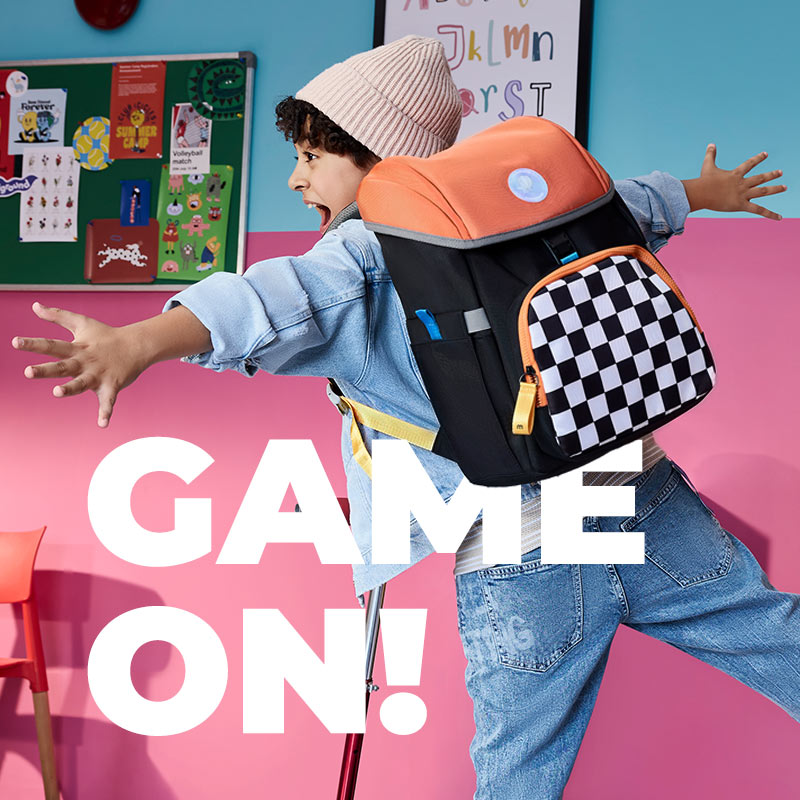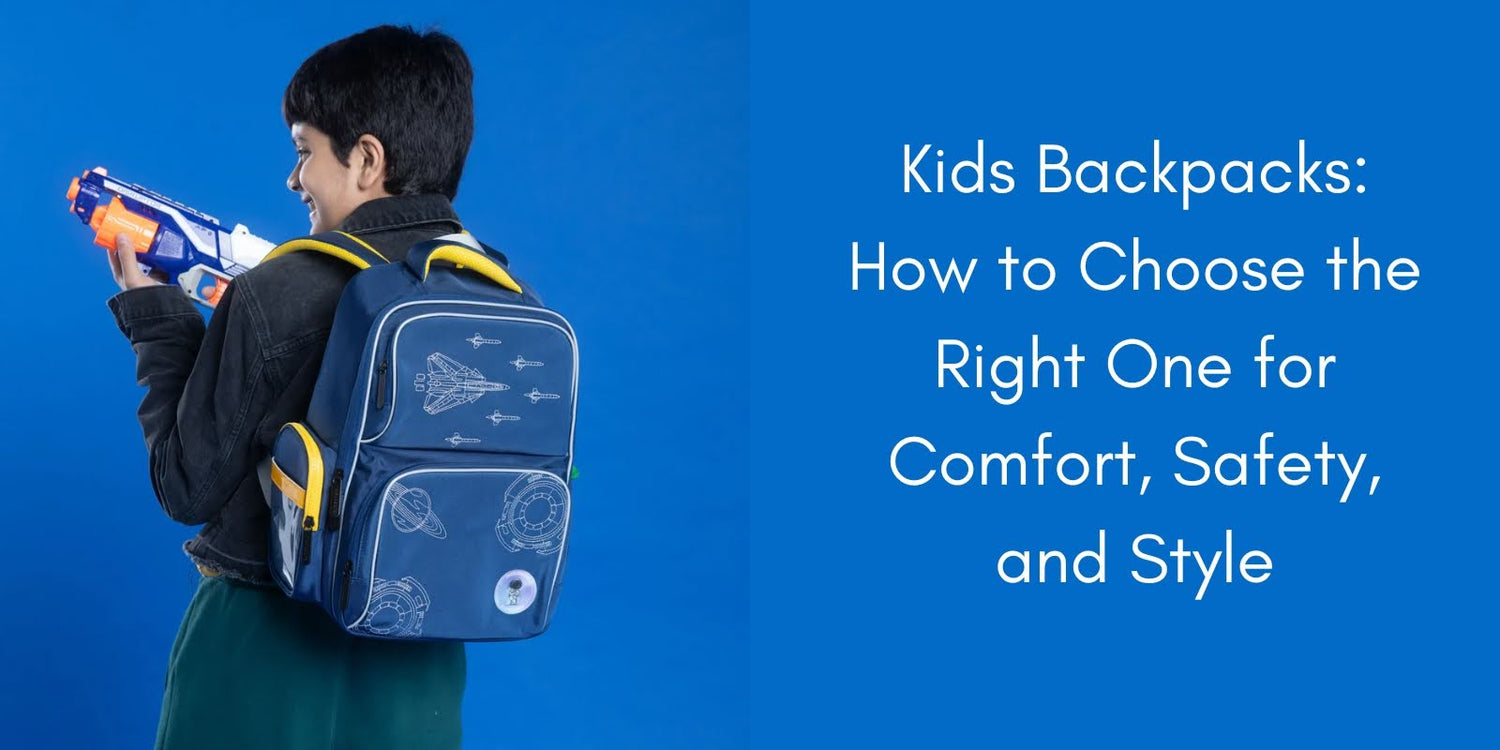TL;DR: Key Takeaways
- Weight matters: Keep backpack load under 20% of your child's body weight to prevent back problems.
- Fit trumps style: Proper torso fit with padded straps and back panel is more important than appearance.
- Safety features save lives: Choose backpacks with reflective elements and water-resistant materials.
- Multiple compartments work better: Distributed weight across several pockets reduces strain compared to single large compartments.
- Age-appropriate sizing: Match backpack capacity to your child's grade level and daily needs.
- Quality investment pays off: Durable materials and reinforced stitching last longer and provide better value than cheap alternatives.
Choosing the perfect kids' backpack goes far beyond picking something that looks cute. Parents face the challenge of finding a school backpack for kids that balances comfort, safety, and style while supporting their child's daily adventures. With children carrying heavier loads and spending more time in active pursuits, the right backpack becomes essential for their physical well-being and confidence.
This comprehensive guide will help you navigate through the essential factors that make the best kids backpacks 2025 stand out from ordinary ones, ensuring your child stays comfortable and safe while expressing their unique personality.
Why the Right Kids' Backpack Matters More Than You Think
The backpack your child carries daily affects their posture, comfort, and overall school experience. Children should carry no more than 10-20% of their body weight in their backpack. A poorly designed school backpack for kids can lead to back pain, shoulder strain, and poor posture habits that extend into adulthood.
Beyond physical considerations, the right backpack boosts a child's confidence and helps them stay organized throughout their school day. When children feel comfortable and love their backpack, they're more likely to take better care of their belongings and approach their daily activities with enthusiasm.
Kids' Backpack Safety: Essential Features That Protect Your Child
Weight Distribution and Ergonomic Design
Kids' backpack safety starts with proper weight distribution. An ergonomic kids backpack features multiple compartments that allow weight to be spread evenly across the bag rather than concentrated in one area. This design prevents strain on any single muscle group and maintains better balance while walking.
Key ergonomic features to look for include:
- Padded shoulder straps that are at least 2 inches wide
- Cushioned back panel with breathable mesh material
- Chest and waist straps for additional support
- Multiple compartments to distribute weight evenly
Visibility and Reflective Elements
Safety extends beyond ergonomics to visibility, especially during early morning or evening commutes. The best kids' backpacks 2025 incorporate reflective elements that make children more visible to drivers and other pedestrians. Look for backpacks with reflective strips, logos, or patches positioned on multiple sides of the bag.
Material Quality and Durability
A safe kids' backpack uses high-quality materials that won't tear under normal use. Premium nylon fabric with reinforced stitching ensures the backpack won't fail when children need it most. Water-resistant materials also protect books and electronics from unexpected weather changes.
Best Kids Backpacks 2025: Features That Make a Difference
Size and Capacity Guidelines
|
Age Group |
Recommended Size |
Ideal Capacity |
Key Features |
|
5-7 years |
Small |
10-15 liters |
Single compartment, easy zippers |
|
8-10 years |
Medium |
15-20 liters |
Multiple pockets, bottle holder |
|
11-13 years |
Large |
20-25 liters |
Laptop sleeve, organization panels |
|
14+ years |
Extra Large |
25+ liters |
Full organization system, tech pockets |
Innovative Design Features
School backpacks for kids should incorporate thoughtful features that make daily use more convenient:
Front Access Pockets: Quick-access compartments for frequently used items like pencils, snacks, or small toys. The Bumblebee Backpack features a specialized front pocket that keeps essentials within easy reach.
Bottle Holders: Side pockets designed to securely hold water bottles prevent spills inside the main compartment while encouraging proper hydration throughout the day.
Name Cards: Internal identification panels help ensure lost backpacks find their way back to their owners quickly.
Interactive Elements: Fun features like color-changing logos or textured surfaces make the backpack more engaging for children while serving practical purposes.
The Perfect Balance: Style Meets Function in Kids' Backpack Design
Color Psychology and Personal Expression
Color choice in a kid's backpack affects both practical and emotional aspects of daily use. Bright colors and patterns help children express their personality while making the backpack easier to spot in crowded areas. However, parents should consider how color choices affect visibility and dirt resistance.
Popular color trends for the best kids backpacks 2025 include:
- Vibrant primary colors that boost mood and energy
- Nature-inspired tones that work well in various settings
- Color-block designs that combine multiple hues for visual interest
- Neutral bases with colorful accents for versatility
Age-Appropriate Styling
Different age groups have distinct style preferences that affect their willingness to use their backpack consistently:
Elementary Age (5-10 years): Fun characters, bright colors, and interactive features appeal most to younger children. The CampFire Backpack, with its unique turtle shell pocket, combines playful design with practical storage.
Middle School (11-13 years): More sophisticated patterns and colors become important as children develop stronger personal preferences. The Cheddar Backpack offers a colorful design with mature functionality.
High School (14+ years): Clean lines, professional colors, and tech-friendly features matter more. The Jetpack Backpack provides ample space and organization for older students.
Ergonomic Kids Backpack: Supporting Growing Bodies
Understanding Proper Fit
An ergonomic kids backpack should fit your child's torso length, not their height. The backpack should sit close to the back, with the top not extending above the shoulders and the bottom not falling below the waist. Proper fit ensures the weight is distributed correctly and reduces strain on developing spines.
Adjustability for Growth
Children grow quickly, so the best kids backpacks 2025 feature adjustable components that adapt as your child grows:
- Adjustable shoulder straps with easy-to-use mechanisms
- Removable chest straps that can be repositioned
- Flexible waist belts for different torso lengths
- Expandable compartments that accommodate changing needs
Posture-Supporting Features
Kids' backpack safety depends heavily on features that encourage proper posture:
- Contoured back panels that follow natural spine curves
- Load-lifter straps that pull the weight closer to the body
- Sternum straps that prevent the shoulder straps from sliding
- Hip belts for heavier loads that transfer weight to the hips
Practical Kids Backpacks Considerations for Daily Use
Organization and Accessibility
A well-organized school backpack for kids helps children develop good organizational habits while making it easier to find what they need quickly.
Multiple compartments serve different purposes:
- Main Compartment: Large space for textbooks, binders, and primary school supplies
- Secondary Compartments: Medium-sized areas for notebooks, folders, and project materials
- Small Pockets: Quick access storage for pens, pencils, erasers, and personal items
- Specialized Sections: Dedicated spaces for electronics, lunch, or sports equipment
Maintenance and Longevity
The best kids' backpacks 2025 balance durability with easy maintenance. Look for features that make cleaning simple:
- Water-resistant coatings that repel spills and stains
- Removable linings that can be washed separately
- Reinforced stress points at zippers and strap attachment areas
- Color-fast materials that won't fade with regular washing
Weather Resistance
Children face various weather conditions throughout the school year. A quality kids' backpack should protect contents from light rain and snow while allowing air circulation to prevent moisture buildup. Water-resistant fabrics and sealed seams provide protection without adding excessive weight.
Special Kids Backpack Considerations for Different Activities
School Backpack for Kids: Academic Focus
Academic-focused backpacks prioritize organization and book protection. Features like padded laptop sleeves, pen organizers, and document pockets help students stay organized. The Jetpack Backpack excels in this area with its dual-compartment design that separates books from personal items.
Active and Outdoor Use
For children involved in sports or outdoor activities, the kids' backpack needs additional durability and specialized features. The FireFly Backpack's drawstring closure and reinforced construction make it ideal for active children who need quick access to their gear.
Travel and Extended Use
Some children need backpacks that work well for overnight trips or extended outings. Features like compression straps, multiple bottle holders, and expandable capacity become more important. The Jukebox Backpack's spacious design accommodates extra clothing and supplies for longer adventures.
Making the Final Decision: A Parent's Checklist
When selecting the perfect kids' backpack, consider these essential factors:
Fit and Comfort Assessment
- Does the backpack sit properly on your child's back?
- Can your child easily reach and operate all zippers and closures?
- Are the straps comfortable when the bag is loaded?
Safety Feature Evaluation
- Does the backpack include reflective elements for visibility?
- Are materials non-toxic and safe for daily contact?
- Do zippers and buckles operate smoothly without sharp edges?
Practical Usage Testing
- Can your child pack and unpack the backpack independently?
- Do compartments accommodate your child's typical daily items?
- Is the backpack easy to clean and maintain?
Long-term Value Consideration
- Will the style remain appealing as your child grows?
- Are replacement parts available if needed?
- Does the warranty provide adequate coverage?
Building Confidence Through Smart Kids' Backpack Choices
The right school backpack for kids becomes more than just a carrying solution. It becomes a confidence builder and a daily companion. When children feel comfortable with their backpack and love how it looks, they approach their daily activities with more enthusiasm and self-assurance.
Consider involving your child in the selection process while guiding them toward options that meet safety and comfort requirements. This approach ensures they get a backpack they'll actually want to use while learning to make responsible choices about their belongings.
Investing in Your Child's Daily Comfort and Safety
Choosing the perfect kids' backpack requires balancing multiple factors, but the investment in your child's daily comfort and safety pays dividends in their overall well-being and academic success. The best kids backpacks 2025 combine innovative safety features, ergonomic design, and appealing style to support children through their daily adventures.
Remember that the ideal ergonomic kids backpack grows with your child, adapts to their changing needs, and maintains its quality through years of daily use. By prioritizing kids' backpack safety alongside style and functionality, you're setting the foundation for healthy habits that will benefit your child throughout their educational journey.
Ready to find the perfect backpack for your little adventurer? our collection that combine safety, comfort, and style in every stitch. Each backpack comes with our 30-day trial period, so you can ensure it's the perfect fit for your child's unique needs.
Frequently Asked Questions
Q. What size backpack is best for kids?
Choose based on age: 10-15 liters for ages 5-7, 15-20 liters for ages 8-10, 20-25 liters for ages 11-13, and 25+ liters for teens. The backpack should fit your child's torso length, sitting between the shoulders and the waist without extending beyond either point.
Q. How do I choose a safe backpack for my child?
Look for reflective elements for visibility, padded shoulder straps at least 2 inches wide, a cushioned back panel, multiple compartments for weight distribution, and high-quality zippers without sharp edges. Ensure materials are water-resistant and non-toxic.
Q. What features should a kids' backpack have?
Essential features include padded shoulder straps, breathable back panel, chest strap, multiple compartments, side bottle pockets, internal name card, easy-to-use zippers, and reflective details. Bonus features include laptop sleeves for older kids and fun interactive elements for younger children.
Q. How heavy should a child's backpack be?
A child's loaded backpack should weigh no more than 10-20% of their body weight. For example, a 25kg child should carry a maximum of 2.5-5kg total. Regularly weigh the packed backpack to ensure it stays within safe limits.
Q. Are ergonomic backpacks better for kids?
Yes, ergonomic backpacks significantly reduce back strain and promote better posture. They feature contoured back panels that follow spine curves, proper weight distribution systems, and adjustable components that grow with your child, making them worth the investment for daily use.
Q. How much weight should a child carry in their backpack?
Children should carry no more than 10-20% of their body weight in their backpack. For a 30kg child, this means a maximum 3-6kg total weight to prevent back strain and posture problems.




Leave a comment
This site is protected by hCaptcha and the hCaptcha Privacy Policy and Terms of Service apply.